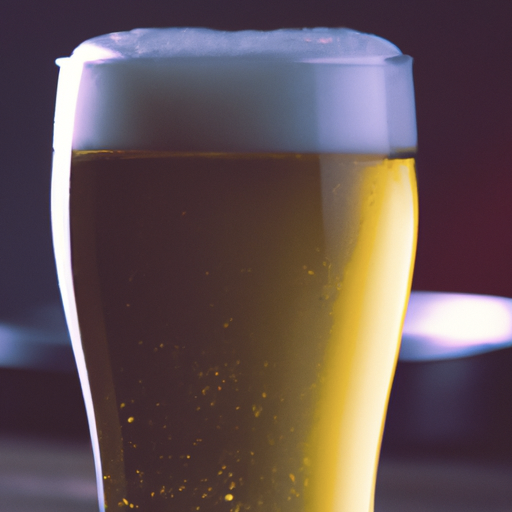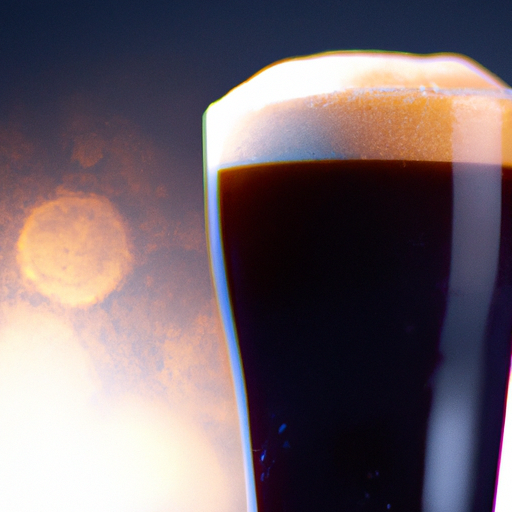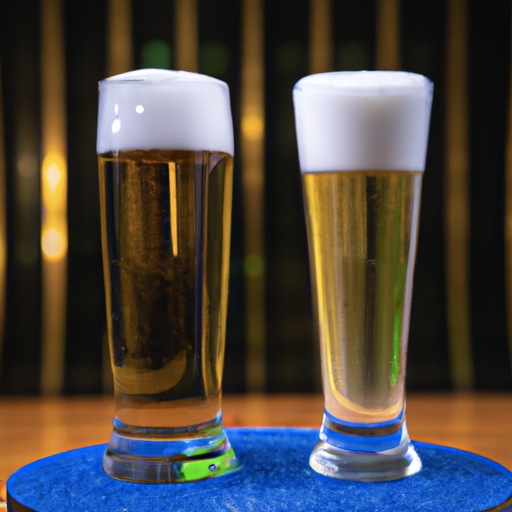There’s a world of diverse flavors and styles waiting for beer lovers to explore. Among them, pilsner and lager stand out as two popular beer styles—these two beers are often compared but are vastly different in many aspects. In this blog post, we will delve into the history, characteristics, brewing process, and serving suggestions of both pilsner and lager, and help you discern the distinct characteristics of these two beers.
Key Takeaways
- Pilsner and lager are both types of beer, but differ in taste, appearance & alcohol content.
- Learn the best way to serve each for maximum flavor – pilsner at 5-8°C with foam. Lager 7-10°C w/ food pairings.
- Popular brands include Pilsner Urquell (pils) & Budweiser/Heineken (lagers).
Pilsner: Origin and Characteristics

The history of pilsner beer can be traced back to the 13th century in the beautiful city of Pilsen, Czech Republic. Pilsner beers are a type of pale lager, and their unique qualities set them apart from other lagers. A perfect balance of sweetness, spiciness, and bitterness, along with a gorgeous golden hue and a huge foaming head, are key features of pilsner beers.
What makes pilsner so special? The use of brighter malts, top-notch water, and local hops contributes to its distinct flavor and appearance.
The process of brewing a pilsner, though it involves the same basic ingredients of malt, yeast, water, and hops, deviates slightly from that of a typical lager. A German pilsner, for instance, boasts a nice balance of malty sweetness and a hint of citrus, with an alcohol content between 4.5% and 5.5%. The use of Saaz hops gives it a spicy flavor, and if you pay close attention, you can notice an underlying malt character.
Pilsner Brewing Process
Initiating the pilsner brewing process involves crushing whole grain malt and combining it with boiling water. The mixture is then pasteurized and allowed to ferment for two weeks before being filtered, giving pilsner its unique beer style. Decoction mashing, a method often used by Bavarian brewers, is an important step in the pilsner brewing process. This method involves taking part of the mash out, boiling it, and then adding it back to the mash tun, which helps break down starches and proteins, creating a more fermentable wort.
The fermentation of pilsner ideally occurs at around 4 degrees Celsius, a temperature lower than that preferred for most lagers. Brewing a German pilsner requires the use of German hops and Saaz to achieve the desired flavor, setting it apart from brewing a dark lager.
Pilsner Flavor Profile
A standout characteristic of pilsner, its translucent golden hue, harks back to its origins in the Czech Republic, where Bavarian brewer Josef Groll first brewed it. The use of Saaz noble hops, as well as local hops from the Czech city, sets pilsner apart from other lagers.
Characterized by a straw to pale color, and a malty sweetness permeating its aroma and flavor, pilsner’s flavor profile is distinctive. It also has a moderate to high hop bitterness, with floral, spicy, or herbal hop flavors. This is different from brewing a lager, which usually results in a smoother, milder taste.
Pilsner finishes dry, crisp, and quite bitter, with a clean fermentation profile.
Lager: Origin and Characteristics

The history of lager dates back to the 1400s in Bavaria, where the beer style first originated. 19th century Europe experienced a boom in lager production. This was largely thanks to the skills of head brewers Gabriel Sedlmayr of Germany and Anton Dreher of Austria..
Lager, a beer type, is brewed with a unique yeast that prefers cold fermentation environments. It has a smooth, crisp taste and can have different levels of bitterness and sweetness, with colors ranging from dark lagers to light golden. As enthusiasts brew beers like lager, they pay close attention to maintaining the ideal temperature for cold fermentation.
Lagers offer a variety of brewing styles, including pale lager that encompasses American lager, pilsners, Helles, and dry beers. The main distinction between lagers and ales is the kind of yeast used in the fermentation process. Beer lovers can easily distinguish between lagers and ales. Taste is the key factor when picking their favorite type of beer..
The pale lager category, which includes various pale lagers such as Helles, Pilsner, Märzen, and Bock, is the most common lager beer produced worldwide.
Lager Brewing Process
In the lager brewing process, bottom-fermenting yeast and cold fermentation come into play. This bottom-fermenting yeast, known as Saccharomyces pastorianus, is the key to producing the clean and crisp beer that lager is known for. The best temperature range for fermenting lager is between 4 and 13 degrees Celsius, which is slightly warmer than the temperature used for fermenting pilsner.
When the temperature is lowered during lager brewing, it reduces the number of unwanted by-products that settle at the bottom during fermentation, resulting in a much purer beer. This is an essential aspect of the lager brewing process, as it sets it apart from other beer styles that use top-fermenting yeast at warmer temperatures.
Lager Flavor Profile
With a mellow, smooth, and light crisp taste, lagers offer a distinct flavor. You might get delicate fruit notes, some maltiness, hoppiness, earthy and dry flavors, a malty backbone, and sometimes bold, herbal, and citric notes. Lager’s flavor profile is quite different from that of a pilsner, which is known for its spiciness and refreshing finish.
When it comes to aroma, lagers have a milder scent since they use bottom-fermenting yeast for fermentation. Pilsners, on the other hand, have a more malty and hoppy aroma, with noble hops adding to their classic smell.
Comparing Pilsner and Lager

Pilsner, a type of pale lager, is characterized by a stronger hop flavor and aroma, while other lagers may present a more robust and bitter profile.
This section will delve into a comparison of pilsner and lager, examining their taste, appearance, and alcohol content to highlight their unique qualities.
Taste Differences
Pilsner has a refreshing, crisp taste while lager has a smooth, mellow flavor. German-style pilsners often have a more bitter taste than other types of pilsners, thanks to the use of Saaz hops. On the other hand, lagers can range from light and crisp to dark and robust, depending on the specific style and brewing process.
The differences in taste between pilsner and lager can be attributed to the brewing techniques, ingredients, and fermentation temperatures used for each beer style. This variety in taste profiles ensures that there is a beer to suit every palate, making both pilsner and lager popular choices among beer enthusiasts.
Appearance Differences
Pilsner has a pale yellow to translucent gold hue, while lager can range from amber red to dark brown. Pilsners are also lighter in color than regular lagers and have bigger bubbles.
These differences in appearance are a result of the unique brewing processes and ingredients used in each beer style.
Alcohol Content Comparison
In terms of alcohol content, pilsner and lager are quite similar, with both typically having an ABV range of 4-6%. This moderate alcohol content, combined with their distinct flavor profiles, makes both pilsner and lager enjoyable options for beer drinkers seeking a refreshing and flavorful beverage.
Regional Variations of Pilsner and Lager
The world of pilsner and lager beers is a tapestry of regional traditions, each offering its own spin on these classic beer styles. For beer enthusiasts eager to expand their palates, exploring the unique characteristics of pilsner vs lager from different parts of the globe is a rewarding journey.
In the Czech Republic, the birthplace of pilsner, brewers use soft water and Saaz hops to create a lager beer with a delicate balance of malt sweetness and a crisp, spicy flavor. Czech pilsners, like the iconic Pilsner Urquell, are known for their golden color, creamy foam, and refreshing bitterness—qualities that have inspired countless brews worldwide.
Germany, another powerhouse in the world of lager, is famous for its diverse range of lager styles. German pilsners tend to be lighter and drier than their Czech cousins, with a pronounced hop bitterness and a clean, crisp finish. Meanwhile, German brewers also produce a variety of other lagers, from the malty, amber Märzen to the dark, toasty Dunkel and Schwarzbier, each with its own distinct qualities shaped by local brewing traditions.
Across the Atlantic, American brewers have put their own stamp on both pilsner and lager. American pilsners often feature a lighter body and a more subdued hop profile, making them a versatile beer for all occasions. The American lager style, popularized by brands like Miller Lite and Budweiser, is known for its easy-drinking, light taste and subtle malt character—perfect for those seeking a refreshing, approachable beer.
Belgium, while more famous for its ales, also offers unique takes on lager beer. Belgian pilsners and lagers may incorporate local yeast strains and brewing techniques, resulting in beers with a slightly sweeter, more complex flavor profile compared to their German or Czech counterparts.
No matter where you are in the world, the regional variations of pilsner and lager showcase the creativity and passion of brewers. Whether you prefer the spicy flavor of a Czech pilsner, the crisp taste of a German lager, or the smooth drinkability of an American classic, there’s a world of beers waiting to delight your taste buds. Exploring these regional differences is one of the joys of being a beer enthusiast and discovering the endless possibilities within the lager style.
Serving Suggestions: Pilsner vs. Lager

Understanding the optimum ways to serve pilsner and lager is crucial in fully appreciating their unique flavors and aromas.This section will offer insights on the optimum ways to serve pilsner and lager, touching on the ideal temperature, suitable glassware, and suitable food pairings.
Pilsner Serving Tips
Pilsner is best when served at 5 to 8 degrees Celsius, but some people like it extra cold at 3 degrees Celsius. As for food pairings, pilsner goes well with:
- seafood
- shellfish
- tangy cheeses
- spicy foods
- fruits
- vegetables
- starchy foods
This versatility in food pairings allows pilsner to complement a wide range of dishes and enhance the overall dining experience.
When serving pilsner, make sure to:
- Pour it slowly into a clean and proper pilsner glass
- Use the right amount of foam
- Choose a tall, slender glass to showcase the beer’s color, carbonation, and foam retention
- Allow drinkers to fully appreciate the unique characteristics of the pilsner style.
Lager Serving Tips
Lager beers taste best when served at a slightly warmer temperature than pilsner, between 7 and 10 degrees Celsius. Serving lager cold in a tall, slender lager glass is the way to go, showcasing its color, carbonation, and foam retention.
In terms of food pairings, lager works well with:
- spicy dishes
- grilled meats
- salads
- lighter dishes
It provides a refreshing contrast to the flavors of the meal.
When it comes to serving lager, it’s important to use clean and aroma-free beer glasses, and pour the lager into a glass for a more enjoyable drinking experience. By following these serving tips, you can ensure that you and your guests get the most out of your lager experience, appreciating the flavors and aromas of this popular beer style.
Popular Examples of Pilsners and Lagers

For those keen on sampling some of the finest pilsners and lagers on the market, the following suggestions are for you.
This section will highlight notable pilsner and lager brands for your sampling pleasure.
Notable Pilsner Brand
Some of the most well-known pilsner brands include:
- Pilsner Urquell
- Beck’s
- Bitburger
- Rothaus Pils Tannenzäpfle
- Warsteiner
These brands offer a taste of the diverse flavors and aromas that pilsners can provide, making them an excellent starting point for any beer enthusiast looking to explore this popular beer style.
Pilsners are a light-bodied, golden-colored beer with a crisp, dry
Notable Lager Brands
For those who prefer lagers, some popular brands worth checking out are:
- Budweiser
- Coors
- Miller
- Heineken
- Corona
- Pabst Blue Ribbon
These lager brands showcase the diverse flavors and aromas that not all lagers can offer, making them a great choice for beer lovers looking to broaden their horizons.
Lagers are a great way to explore the world of beer, as they come in a
Summary
In conclusion, pilsner and lager are both popular beer styles with unique flavor profiles, histories, and brewing processes. By understanding the differences between these two beer styles, you can truly appreciate the diverse world of flavors that await you in the realm of beer. So, whether you prefer the clean, crisp taste of a pilsner or the smooth, mellow flavor of a lager, there’s a perfect beer out there just waiting for you to raise a glass and enjoy.
Frequently Asked Questions
Is pilsner stronger than lager?
Although pilsner styles may have an extra “kick” to them due to their spicy and hop-forward flavor, they are usually not stronger in alcohol content than other lagers.
Is Budweiser a lager or pilsner?
Budweiser is both a pale lager from Germany and a pilsner from America, made with rice and wheat. Its name is widely popular around the globe.
What is considered a pilsner beer?
Pilsner is a type of pale lager characterized by its light color and its refreshing taste that’s lightly hopped. It takes its name from the Bohemian city of Plze where it was first produced in 1842, and during production it undergoes a process called “lagering” for a crisp flavor. This process involves storing the beer in cold temperatures for several weeks or months, allowing the yeast to settle and the flavors to mellow. This results in a smooth, crisp beer that’s light in body and flavor
What is the ideal temperature for serving pilsner and lager?
For a great tasting experience, serve pilsner between 5-8°C and lager between 7-10°C.
What are some well-known lager brands?
Popular lagers worth trying include Budweiser, Coors, Miller, Heineken, Corona, and Pabst Blue Ribbon.


Comments
2 responses to “Uncovering the Difference Between Lager and Pilsner”
[…] also come in a variety of styles, each with distinct characteristics. Pilsner, originating from Bohemia, is perhaps the most recognized lager style globally. It is lighter in […]
[…] many styles and subcategories, the world of beer offers something for everyone. Understanding the differences between pilsner and lager, as well as other classic styles, helps beer lovers appreciate the unique qualities of each brew. […]